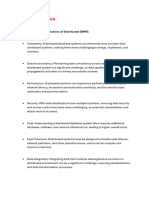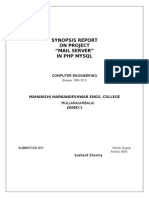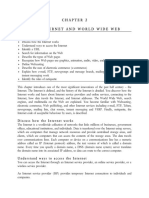0% found this document useful (0 votes)
14 views10 pagesBlockchain
The document outlines the drawbacks of traditional banking systems and highlights the benefits of blockchain technology, including decentralization, transparency, and security. It explains various concepts related to blockchain, such as smart contracts, consensus mechanisms, and the structure of blocks, while also discussing the differences between centralized and decentralized architectures. Additionally, it covers the importance of cryptographic hash functions, digital signatures, and various consensus algorithms used in blockchain systems.
Uploaded by
SampritiCopyright
© © All Rights Reserved
We take content rights seriously. If you suspect this is your content, claim it here.
Available Formats
Download as PDF, TXT or read online on Scribd
0% found this document useful (0 votes)
14 views10 pagesBlockchain
The document outlines the drawbacks of traditional banking systems and highlights the benefits of blockchain technology, including decentralization, transparency, and security. It explains various concepts related to blockchain, such as smart contracts, consensus mechanisms, and the structure of blocks, while also discussing the differences between centralized and decentralized architectures. Additionally, it covers the importance of cryptographic hash functions, digital signatures, and various consensus algorithms used in blockchain systems.
Uploaded by
SampritiCopyright
© © All Rights Reserved
We take content rights seriously. If you suspect this is your content, claim it here.
Available Formats
Download as PDF, TXT or read online on Scribd
/ 10



























































































